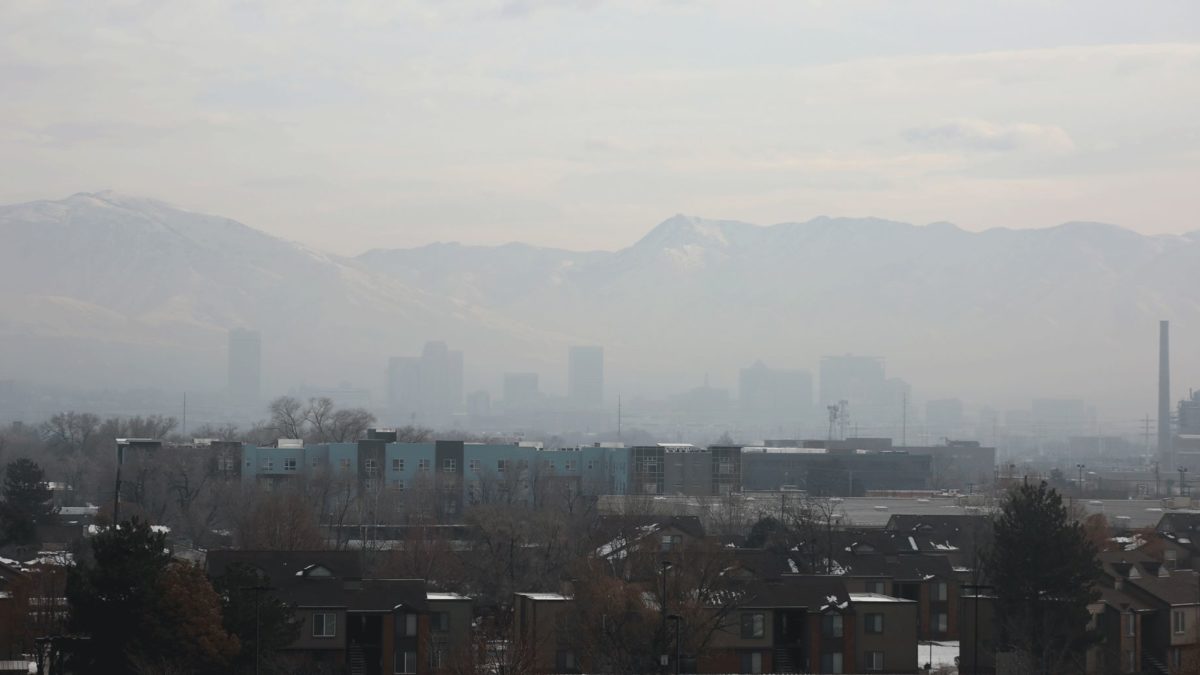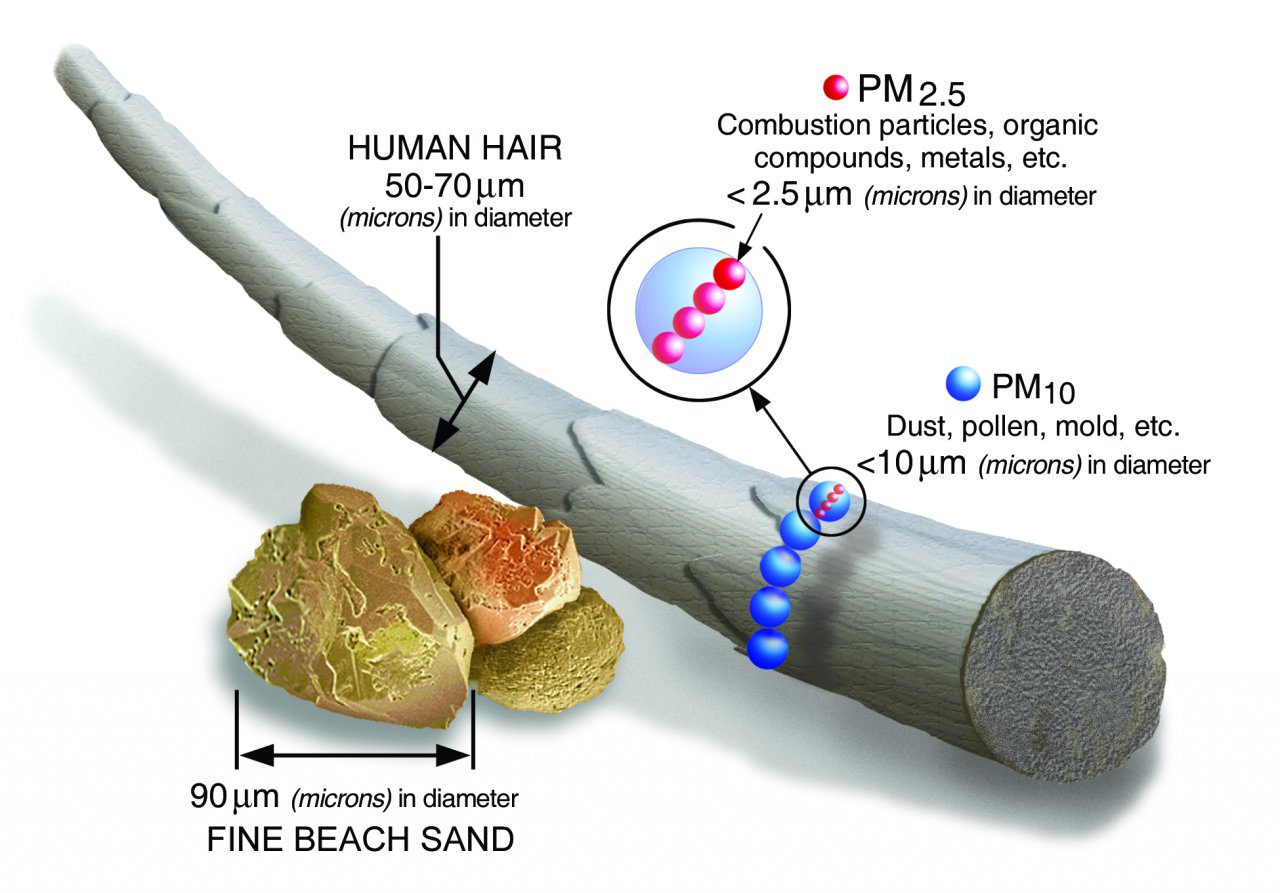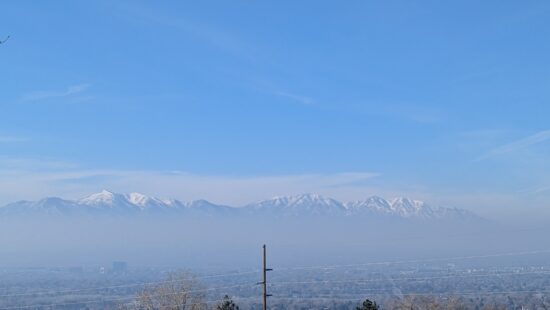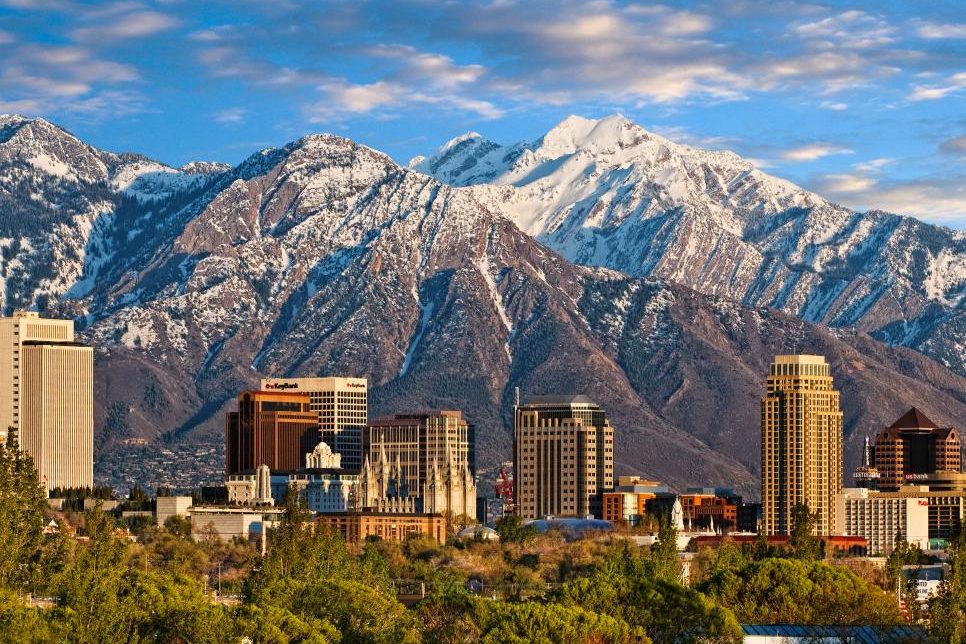Top Stories
Inversion and Air Quality: Utah’s unwanted winter phenomenon

An inversion event from January 2019. Photo: Courtesy of the Utah Department of Environmental Quality.
UTAH — Utah is famous for being home to the “Greatest Snow on Earth” thanks to dry fluffy snow so soft it can’t even make a snowball. Unfortunately, for those who live here, there is a less pleasant experience brought on by winter, inversion. Those who’ve experienced driving out of a cloud of dirty air as they make their way into higher elevations, or the presence of a foul taste in the air, will not likely forget it.
Inversion is frequently connected to the Salt Lake Valley and Wasatch Front, but it can occur anywhere a valley is surrounded by mountains. The naturally occurring phenomenon involves a warm air layer passing over colder air and trapping it. The duration of an inversion event can last days to even weeks. Having snow on the ground and cold temperatures contributes to an inversion staying put as sunlight is restricted from heating the ground.
Inversion in itself is not a harmful thing. The problem arises from air pollution, cars on the road, water heaters, furnaces, businesses, schools, buses, and other sources. With an inversion in place, the pollution has nowhere to go, and the effect is compounding, as the concentration of particulates can increase daily.
The term particulate describes the mixture of solid particles and liquid droplets in the air, such as dust or pollen. In the case of air quality, the prime suspects are PM 10, inhalable particles with a diameter of 10 micrometers or smaller, and PM 2.5, particles 2.5 micrometers or smaller. A comparison cited by the Environmental Protection Agency is a single strand of hair with a diameter of 70 micrometers. That single hair is 30 times larger than a PM 2.5 particle.

Particles of either size range can go deep into the lungs and bloodstream, but the smaller PM 2.5 poses the greatest health risk. Although significant health problems are possible repercussions, numerous environmental problems can occur as a result, such as soil or water nutrient balance or contributing to acid rain effects.
“We have some issues derived from secondary PM 2.5. In other words, it’s not actually emitted from your tailpipe or your house as a particulate, but some of the chemicals and compounds that come out of your tailpipe or water heater vents or whatever. The resulting particulate will end up in the atmosphere, and they will combine given some time and some sunlight. They will combine to form ammonium nitrate, and that isn’t particularly good. That’s what we see makes up about 70% of our particulate during the winter,” said Air Monitoring Manager Bo Call from the Utah Division of Air Quality.
Over the past 20 years, the severity of an inversions effect on air quality has decreased significantly. In previous years, trapped air pollution could be expected to double in concentration each day, leading to multiple days above the National Ambient Air Quality Standards or the determined level of increased health risk. Although measurements have still gone above “standard” in recent years, the number of days, and to what level above, has also dropped. Some of the contributions to this reduction include cleaner vehicles and electric vehicles.
The population rise in Wasatch and Summit Counties led to the state legislature appropriating funds for the DEQ to work on setting up multiple air quality monitoring stations in both counties. The monitoring stations track air quality throughout the winter to determine what effect inversion is having in those areas.
“One of the things for the Heber Valley, and some of these other valleys outside the Wasatch Front, is that they are smaller areas, and so they’re going to be tighter, and they may have different characteristics. Some valleys might be a little colder, for example,” said Call.
Looking into the future, proactive initiatives put in place by the DEQ and technological innovations give hope in reducing emissions. Factors such as population increase and global warming will have an effect and need to be studied. The most positive change over the years, and one cited by Call, is that people are more aware of what is causing air quality problems. Information is only a press of the finger on a phone away from being able to influence choices made each day.
To stay up to date with air quality and advisories issued by the DEQ, download the UtahAir app, available on both apple and android, or visit the air quality website where current conditions are shown.
Appreciate the coverage? Help keep Park City informed.
TownLift is powered by our community. If you value independent, local news that keeps Park City connected and in the know, consider supporting our newsroom.


















